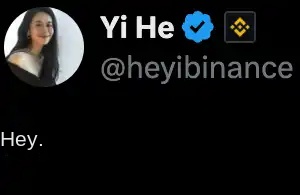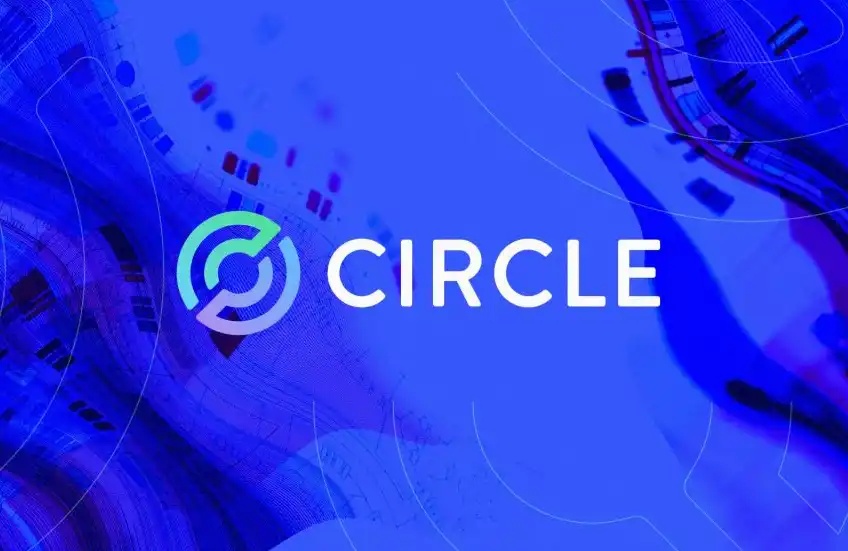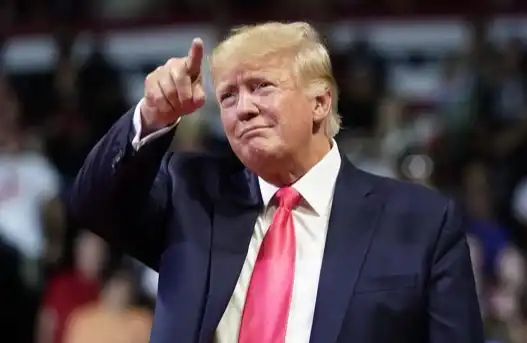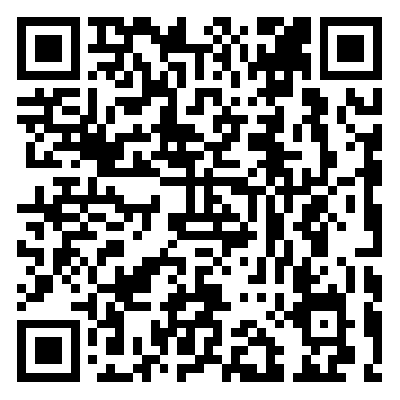Exclusive interview with the founder of Merlin Chain: "The surge of the Blue Box and the future of Bitcoin."
With the approval of BTC ETF, the Bitcoin ecosystem is entering a golden age, and many believe that this round of bull market will mainly erupt in the Bitcoin field. We are honored to invite Jeff, the founder of Merlin Chain, an industry pioneer deeply involved in the Bitcoin ecosystem. Merlin Chain is a BTC Layer2 that focuses on serving Bitcoin native users, assets, and protocols, and shares the security of Bitcoin Layer 1 through ZK technology. It is an indispensable force in the current Bitcoin ecosystem.
Bitmap and BRC-420 Design Intentions
BlockBeats: The market response to Bitmap.Game and BRC-420 has been very positive. Can you share the inspiration behind creating these two projects?
Bitmap is a completely decentralized and trustless asset that we see in the market. Each inscription on it represents specific data from a particular block, such as all transaction information, fees, and mined bitcoins.
The asset itself is completely decentralized and can be engraved by anyone, so the community is very large. However, when it was just engraved, its market value was only $2 million. We hope to develop some applications based on this large community and provide some practicality, so we launched Bitmap.Game, a metaverse on Bitcoin.

The yellow dots on the map are all online users. Zooming in on the map allows you to see each person's plot:

All the pictures and content on the land, or all visible content in our product, are on-chain data. Everyone has different wallet assets and can choose to use these assets as the cover of the land. After entering a specific land, you can see all the Avatars, gameplays, game scenes, etc. of the room, which are also on-chain assets.

Our original intention for launching Bitmap.Game was to build a client agnostic product that is not dependent on specific servers, decentralized, and does not require permissions. Because all data comes from the chain, not in our hands, even if we no longer operate, others can choose to build their own clients to continue development, and anyone can compete to develop similar products. We believe that such products are the future direction of development, which may be unique, but this is indeed our original intention.
And BRC-420, which we call the asset protocol for data modularization and modular tokenization. In other words, we can turn any data into a module and tokenize it to make it an asset. For example, there is a DLC called Bitmap.town, which contains over 600 game assets from various metaverses, such as animations, scripts, avatars, music, and more. They are packaged into a DLC and then tokenized. Once the project is released, all content will be fully on-chain, and users can access and build their own content based on it, while holding these tokens, without relying on the team that developed the DLC.
So far, the trading volume of BRC-420 assets is very high, and the increase, number of holders, and market value are all good. Although it was initially referred to as a metaverse protocol, there is no necessary connection between BRC-420 and the metaverse. We hope to see more innovative gameplay based on decentralized product structures and fully chain-linked modular composable asset protocols in the future.
BlockBeats: It's a bit like turning inscriptions into a game card and turning Bitcoin into a game console, where players can copy games into it. What do you think the impact of these functional features will be on the development of the entire Bitcoin ecosystem?
We are one of the most unique teams in the Bitcoin ecosystem, as we do only things that have not appeared in other ecosystems. Initially, we did a lot of things based on recursion, such as recursive graffiti and a recursive on-chain forum. Later, we created Bitmap, a completely decentralized data packet, and then launched BRC-420.
One reason is that I believe any new ecosystem needs its own narrative. Doing something similar to Ethereum in the Bitcoin ecosystem, or vice versa, would seem unoriginal. Just like after the popularity of the Blue Box, every chain had a 420 protocol and boxes of various colors. We must create something that has not been seen before, to build a new narrative and promote the development of the Bitcoin ecosystem. For example, since much of Ethereum's content is not on-chain, we need to combine on-chain content.
The second is a new product model under the new narrative, which can be seen in some of the products on BRC-420. For example, Mineral has created a gameplay that combines DeFi and computing power; and some on-chain games based on Bitmap, Bitmap Valley and Bitmap War, are using the BRC-420 protocol to issue assets. This is a product operation model based on on-chain content: first issue BRC-420 assets, then convert them into graphic coins or airdrop tokens, and then build products based on these assets on the second-layer network. I think the innovation of the entire product model will continue to emerge with the trend.
The last one is composability, which I believe is the biggest productivity innovation in blockchain, but it is rarely mentioned in ecosystems such as Ethereum. I believe you also know the term DeFi Lego, and the essence of DeFi is the composability between different Legos. From Uniswap to liquidity mining, to Compound, and then to Curve, smart contracts have enabled explosive innovation in the entire industry, all of which are derived from composability. Bitcoin, on the other hand, can solve composability in terms of content. For example, if you have made a game with 20 modules, I can quickly create a new game based on 15 of them without having to reinvent the wheel. I think we have grasped the most unique innovation in the Bitcoin ecosystem, rather than simply replaying the Ethereum playbook.
Jeff's Bitcoin Entrepreneurship Journey
BlockBeats: From your speech, we can feel that you have a very good understanding of Bitcoin and the entire crypto industry. Have you ever considered starting a business in other ecosystems before this round of Bitcoin ecosystem explosion?
This is actually my first time starting a business in Web3 with Bitmap Tech. Previously, I have always been in the Web2 industry. I have always believed in the spirit of blockchain. The reason why I did not choose to start a business in the blockchain field before was because I did not find a real entry point that could truly improve productivity.
As practitioners in the encryption industry, we all understand the profound impact that the internet has had on productivity. As internet users, we are able to participate in meetings through video conferencing, access a wealth of information online, and see parts of the world that were previously only accessible to a select few. Therefore, I believe that innovation in productivity is a crucial key point.
Previously, whether it was in the 2017 ICO or the 2020 DeFi, I did not find a suitable entry point that I liked, so I have been focusing on Web2 entrepreneurship. In fact, my previous company was also involved in the metaverse field, with approximately 40 to 45 million users worldwide.
This time, it's actually a coincidence that we chose to venture into the Bitcoin industry. When we decided to take another look at Web3, we happened to come across the rise of the Ordinals ecosystem, which I feel very fortunate about.
Secondly, the market trend is gradually returning to the encryption culture of the earliest Bitcoin, which reignites my passion for Web3 entrepreneurship. In my opinion, the Ethereum ecosystem is too institutionalized, with too many established rules and clear-cut gameplay, and a high degree of centralization. For example, one needs to follow Vitalik Buterin or the Ethereum Foundation to start a business, and then look for VCs, exchanges, and so on. This kind of gameplay makes me feel that the original intention of encryption has been lost.
Ordinals advocates the concept of fully on-chain, which aligns with my belief in permissionless composability and my own philosophy. Therefore, I chose to start my business in the Bitcoin ecosystem during this wave.
BlockBeats: Can you share how you first got involved with Bitcoin and why you are now such a firm believer in its future?
I actually got involved with Bitcoin very early on. In 2012, I received an investment from a VC and founded my first company in China. This investment firm also happened to invest in Coinbase and Ripple. At that time, I was also an early scholar in computer science. Later on, during my high school and undergraduate studies in the United States, I shifted my focus towards political science and sociology. The combination of these backgrounds filled me with faith when I first encountered Bitcoin.
At that time, many programmers did not trust Bitcoin and thought the technology was outdated; while many liberal arts students felt it was too esoteric and did not have much feeling about it. However, after I read the Bitcoin white paper for the first time, I plunged into it without hesitation. Therefore, the earliest group of people in China who came into contact with Bitcoin were all good friends of mine. We discussed the methods of purchasing together and later traded together. I believe that there is no specific reason for Bitcoin, it is just a belief.
I think Bitcoin and Ordinals are very similar, both are anti-fragile things without weaknesses. Even if the price drops very low, even if everyone dislikes it, it will always exist and will not be eliminated or killed by a single file. This is what I liked the most at that time. Because the world is fragile, various countries and regions have various problems, and they need this kind of anti-fragile thing. So I have had an incredible faith in Bitcoin for more than ten years, and last year I also began to believe in the Ordinals ecosystem.
BlockBeats: Do you feel that your punk attitude has influenced your project's positioning and development direction in the Bitcoin ecosystem?
First, we hope to find the most unique innovation in the Bitcoin ecosystem, and never repeat the old path of Ethereum. As entrepreneurs, we crave to challenge uncertainty, which can stimulate the drive for innovation. Following the old path that others have already taken will lack freshness.
Secondly, our belief in the ecosystem is also a belief in humanity. When we started building the Ordinals product, it was around May or June of last year, and at that time, almost all of Ordinals' assets were close to zero. The entire Bitcoin ecosystem and Ordinals were ridiculed and looked down upon by the outside world. When I was outside, almost no one around me knew that I was working on Ordinals, because once I said it, many people would think it was a scam or a game for children.
Based on this, we collaborated with Particle three months ago to develop a Bitcoin wallet solution. Whether you use Unisat or OKX, any Bitcoin wallet can seamlessly switch between layer one and layer two. This added a lot of time and cost, but we believe it is necessary to serve Bitcoin users well.
The third thing is actually a natural fit, which is embracing the native innovation of Bitcoin. Only by putting the real users, protocols, builders, project parties, and native assets of Bitcoin into a virtual machine can we expect innovation. If everything is based on Ethereum, it is impossible to have Bitcoin's innovation.
Currently, the total market value of Bitcoin-related assets is only around 4 billion US dollars, which is a long way from the market value of Bitcoin. We need to embrace these assets and users, and explore innovative models together with them.
Our first Launchpad to go live is Particle's People's Launchpad, which will use the BRC-20 protocol and bring some innovations in the issuance of native Bitcoin assets.
Technically speaking, we don't think being EVM compatible is an innovation, as everyone is EVM compatible. Our innovation is building our own cross-chain bridge, which allows us to cross any asset we want, such as Bitmap, BRC-420, and ARC-420, which no other chain supports except for us. Another innovation is that we have built ZK Rollup, which further compresses the volume of ZK proof and constructs a DA Layer that inherits the security of Bitcoin. All of these will be displayed in our GitBook. However, many teams are exploring this direction with us, and it's hard to say that these unreleased things are our own technological innovations.
In terms of ecology, we have People's Launchpad, Mineral, Bitmap War, and MOBOX games. We hope to serve more of these existing Bitcoin ecological products, because these communities are very active, easy to launch, and can generate traffic and revenue.
Jeff Talks about the Future Outlook of Merlin Chain and Bitcoin Ecosystem
BlockBeats: How will the launch method of Merlin Chain differ from other projects?
One characteristic of assets on the first layer of Bitcoin is that the more holders there are, the more inscriptions there will be, and the higher the cost will be. As a result, everyone's return expectations will increase, making it difficult for asset prices to rise. This is like an impossible triangle, which has led to the current stagnation of Bitcoin assets.
BlockBeats: Will there be any recent news from Merlin Chain? What is the future roadmap?
In the first half of the year, we will organize some activities related to the developer ecosystem to attract more builders. We don't want to simply transplant Ethereum's DApps and play with them in the same way. Therefore, we have invested in and incubated many native projects, using Bitcoin's approach to develop DApps. One of the products can receive any token on the second layer and be used to engrave assets on the first layer, similar to cross-chain atomic swaps, which is very native to Bitcoin.
We will have two developer incentive plans this year to encourage more people to build in a Bitcoin-native way, achieving more users, better liquidity, and more innovative products.
BlockBeats: Many people are saying that this bull market will mainly happen in Bitcoin. What are your thoughts? Can you share your expectations for the development of the Bitcoin ecosystem?
The market value of Bitcoin accounts for more than 50% of the entire cryptocurrency field. If it introduces the function of earning interest, the financial derivative returns and liquidity that this fund size can bring are impossible to achieve by other ecosystems no matter how innovative they are. Therefore, I think that the demand for interest-bearing assets in Bitcoin alone is enough to trigger a bull market.
BlockBeats: What role do you think Merlin Chain will play in the development of the Bitcoin ecosystem? How will it empower Bitcoin projects and assets?
Welcome to join the official BlockBeats community:
Telegram Subscription Group: https://t.me/theblockbeats
Telegram Discussion Group: https://t.me/BlockBeats_App
Official Twitter Account: https://twitter.com/BlockBeatsAsia
 Forum
Forum OPRR
OPRR Finance
Finance
 Specials
Specials
 On-chain Eco
On-chain Eco
 Entry
Entry
 Podcasts
Podcasts
 Data
Data

 Summarized by AI
Summarized by AI







